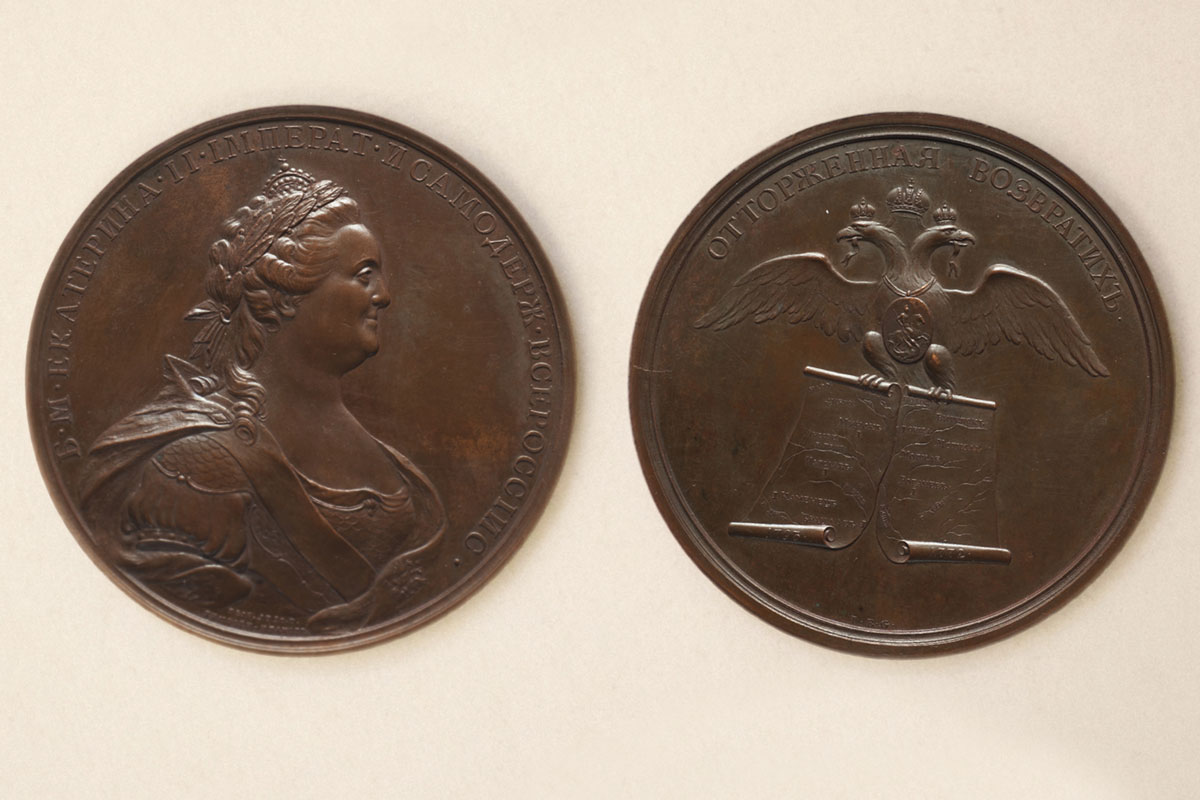Restored or Conquered?
In Russian Literature 371, students discover cultural messages in an 18th-century medallion that impact world events today.
This medal was commissioned by Catherine the Great in 1793, commemorating the Russian Empire’s annexation of lands from the Polish–Lithuanian Commonwealth during the Second Partition. One side features a portrait of the Empress; the other, a double-headed eagle brandishing maps of the conquered territories, which fall within the present-day borders of Belarus and Ukraine. In an inscription across the top of the medal, the Empress declares her triumph: “I have restored what had been torn away.”
This 18th-century propaganda message likely rings familiar to anyone following news from this part of the world today, as the Russian Federation’s invasion and attempted territorial conquests of Ukraine are once again presented by the Kremlin in terms of restoration, return, and reunion. In fact, replicas of this medal were made by a Russian ultra-nationalist group following the Russian Federation’s annexation of Crimea in 2014.
Studying the 18th-century original alongside the 21st-century replica, we are prompted to think critically about how ideological messages are encoded all around us, and how cultural heritage and history can be weaponized in this process. This medal also prompts us to think about the power of poetic language and symbolic images, leading us to examine their role in building and welding—yet also in resisting —the power of the state.
My students and I will be studying Catherine the Great’s commemorative medals, as well as a variety of other ceremonial and decorative objects, in the course “Russian 371 - Russian Literature and Culture from Medieval to Romantic,” offered in Spring 2023.
Tags: Object of Study, Academics
